Difference between revisions of "Pig leather"
| Line 4: | Line 4: | ||
| − | == | + | ==Pig leather - Pigskin - Pig suede - Pork- Pork suede== |
| − | + | In the world, there are about 950 million pigs (as of 2005). Of this, almost 100% are slaughtered annually. Pigs are slaughtered at the age of 6 to 10 months. Pig suede is ranked fourth with about 5 to 7% of world production. Pig leather is the world's fourth-largest amount of produced leather, after [[cow leather|cow]], [[Sheep leather|sheep]] and [[goatskin|goat]] leather. | |
| Line 13: | Line 13: | ||
</p> | </p> | ||
<p align=center> | <p align=center> | ||
| − | '' | + | ''Pork of Chinese type. - Pork of the Greek type.''<br></p> |
<p> </p> | <p> </p> | ||
| − | + | The leather of domestic pigs, commonly called pork, is distinguished from the wild boar. The most representative of which is the peccary for the [[leather industry]]. Especially the European domestic pig provides a leather which is very rich in fat. Domestic pigs are only slightly hairy. Characteristic of the appearance of the pig leather are the grouped holes of the [[Leather hair pores - Hair follicles|hair pores]]. Usually there are triple groups. The fiber structure within the pigskin skin is very different. The leather is [[Looseness|loosely and spongy]] on the head and the flank, while on the flank it is sometimes horny. | |
| Line 23: | Line 23: | ||
</p> | </p> | ||
<p align=center> | <p align=center> | ||
| − | '' | + | ''Domestic pig.''<br></p> |
<p> </p> | <p> </p> | ||
| Line 31: | Line 31: | ||
</p> | </p> | ||
<p align=center> | <p align=center> | ||
| − | '' Pork | + | '' Pork [[suede]]. - Well recognizable: the [[Leather hair pores - Hair follicles|hair pores]].''<br></p> |
<p> </p> | <p> </p> | ||
| Line 39: | Line 39: | ||
</p> | </p> | ||
<p align=center> | <p align=center> | ||
| − | '' | + | ''Wild boar skin.''<br></p> |
<p> </p> | <p> </p> | ||
==Pig leather [[leather clothing]]== | ==Pig leather [[leather clothing]]== | ||
| − | + | Pig leather is most commonly used in [[leather clothing|clothing]]. In addition to [[Lamb leather|lambskin]] and [[goatskin|goat suede]], it is the most common type of leather in [[leather clothing]]. All three [[types of leather|leather types]] are light and not too warm and therefore ideal for leisure wear. Only with [[Leather suits|motorcycle leather suits]] dominates the [[cow leather]]. It is significantly [[leather quality|thicker and tearproof]] and for safety reasons the first choice. The leather of the peccary is used predominantly for high-quality [[leather gloves|gloves]]. | |
| − | + | Especially in the cheaper segment of the [[leather clothing]], very much pig leather is processed, mostly as [[suede]], but occasionally also as [[finish|pigmented]] [[smooth leather]]. Pig leather is cheaper than [[lamb leather]]. Pig leather is less [[leather quality|tear-resistant]] compared to the high-quality [[lamb leather|lamb]] and [[goatskin|goat leather]]. Pig leather also has a more cardboard-like [[Haptic evaluation of leather surfaces|haptic]]. | |
Revision as of 18:42, 12 February 2017
Contents
- 1 Pig leather - Pigskin - Pig suede - Pork- Pork suede
- 2 Pig leather leather clothing
- 3 Book covers and handbags inner lining
- 4 Peccary
- 5 Pig leather furniture
- 6 leather suitcase made of pig leather
- 7 A bicycle saddle made of pig leather
- 8 Video about leather of different animal species
- 9 Additional information
Pig leather - Pigskin - Pig suede - Pork- Pork suede
In the world, there are about 950 million pigs (as of 2005). Of this, almost 100% are slaughtered annually. Pigs are slaughtered at the age of 6 to 10 months. Pig suede is ranked fourth with about 5 to 7% of world production. Pig leather is the world's fourth-largest amount of produced leather, after cow, sheep and goat leather.
Pork of Chinese type. - Pork of the Greek type.
The leather of domestic pigs, commonly called pork, is distinguished from the wild boar. The most representative of which is the peccary for the leather industry. Especially the European domestic pig provides a leather which is very rich in fat. Domestic pigs are only slightly hairy. Characteristic of the appearance of the pig leather are the grouped holes of the hair pores. Usually there are triple groups. The fiber structure within the pigskin skin is very different. The leather is loosely and spongy on the head and the flank, while on the flank it is sometimes horny.
Domestic pig.
Pork suede. - Well recognizable: the hair pores.
Wild boar skin.
Pig leather leather clothing
Pig leather is most commonly used in clothing. In addition to lambskin and goat suede, it is the most common type of leather in leather clothing. All three leather types are light and not too warm and therefore ideal for leisure wear. Only with motorcycle leather suits dominates the cow leather. It is significantly thicker and tearproof and for safety reasons the first choice. The leather of the peccary is used predominantly for high-quality gloves.
Especially in the cheaper segment of the leather clothing, very much pig leather is processed, mostly as suede, but occasionally also as pigmented smooth leather. Pig leather is cheaper than lamb leather. Pig leather is less tear-resistant compared to the high-quality lamb and goat leather. Pig leather also has a more cardboard-like haptic.
Pig leather is often offered at low prices.
Finished (pigmented) pig leather can still be recognized by the prominent pores.
Book covers and handbags inner lining
In addition to being used as a clothing leather, pig leather is also used as an inner lining for handbags or for book bindings.
Book cover made of pig leather from the collection of www.feinleder-hoffmann.com. - Pig leather as inner lining of a handbag.
Peccary
Peccary is the name for pig leather from the hides of wild-living, South American nelfer pigs. The term "peccary" originates from the indigenous Brazilian Tupi language and roughly describes "an animal that treads many paths in the forest". Due to the free life in nature, the leather often has scars and other defects, which should be regarded as an authenticity feature. Peccary is used for valuable gloves due to its suppleness. It is also a popular source of food because of its aromatic meat.
Peccary pig. Soft glove leather of the peccary with visible [Leather hair pores - Hair follicles|hair pores]] (available at www.heinzbauer.com).
Peccary should not be confused with the similarly carpincho leather, which is of a South American large rodent type.
Pig leather furniture
Furniture made of pig leather usually does not exist because the leather is too thin and too less tear resistant for this purpose.
Pig leather is not suitable as a upholstery leather.
leather suitcase made of pig leather
In South America, suitcases made of pig leather are spread.
Typical leather suitcase made of pig leather.
A bicycle saddle made of pig leather
Apparently there were also bicycle saddles made of pig leather. An unusual application due to the poor stability of this leather.
Very curious: An old bicycle saddle made of pig leather.
Video about leather of different animal species
Leather of different animal species - Exotic leather.
Additional information







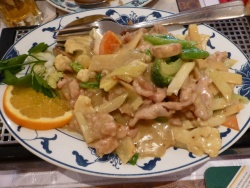
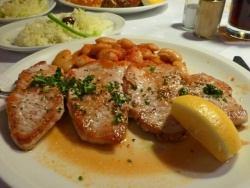
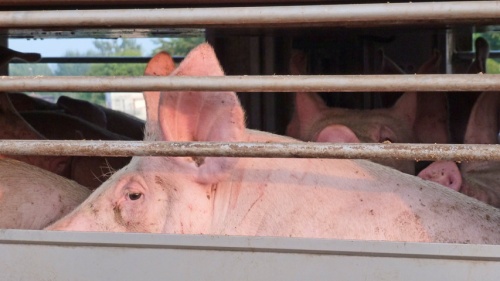
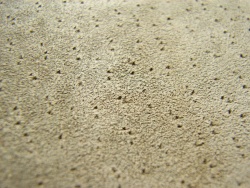
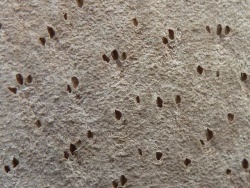
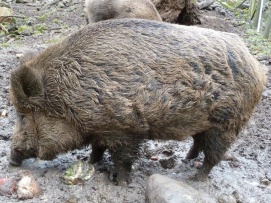
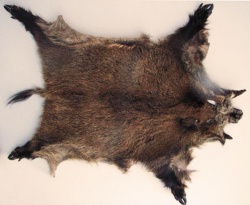

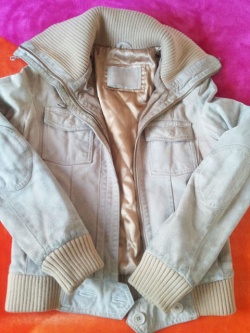
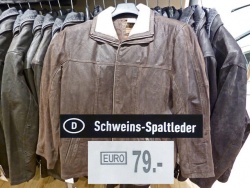
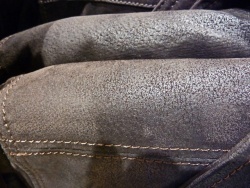
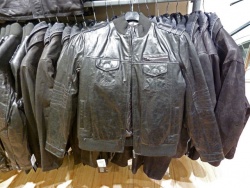
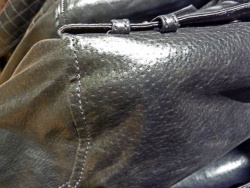
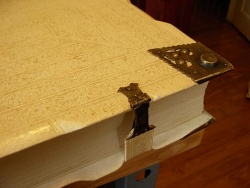
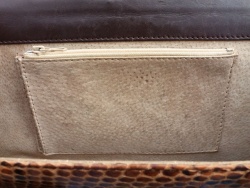
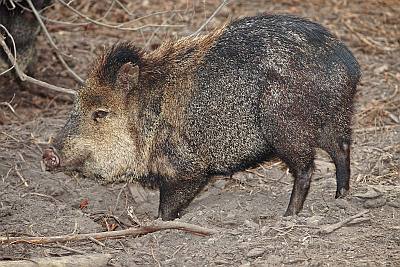
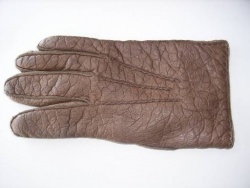
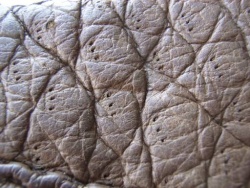
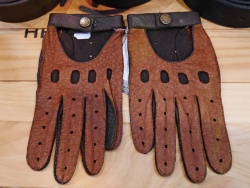
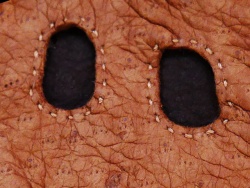
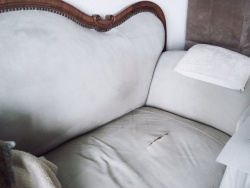
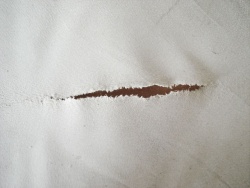
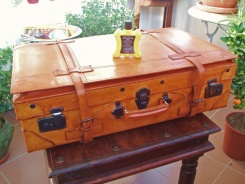
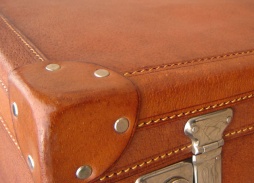
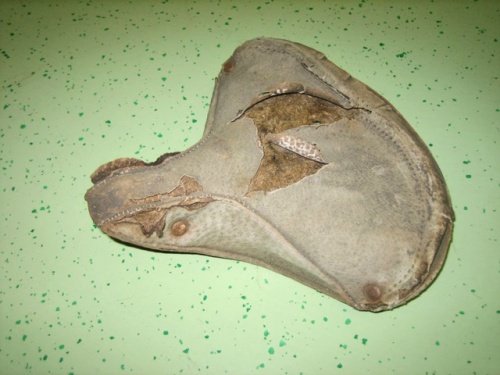

 a kotori web solution
a kotori web solution